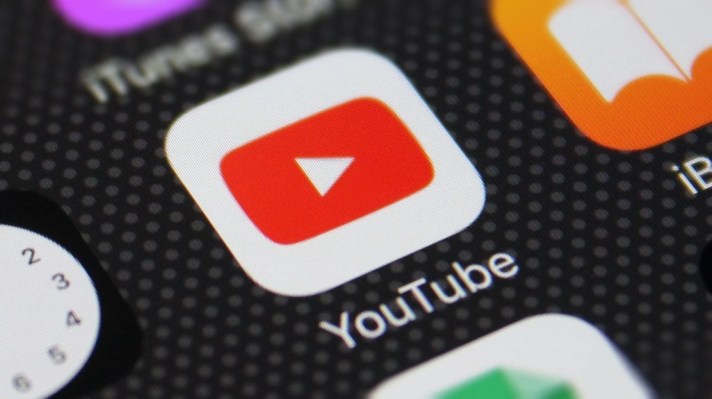YouTube’s TikTok competitor known as YouTube Shorts is today launching a new feature, similar to TikTok’s Stitch, that will allow creators to incorporate a short video segment from another user’s YouTube video or Shorts video when creating new Shorts content. The feature is an expansion of YouTube Shorts’ existing “remix” functionality which had previously allowed creators to sample audio from other videos into their own Shorts posts.
YouTube videos across the platform will be immediately opted into remixing by default. That means if a creator doesn’t want their content remixed into Shorts, they have to opt out from YouTube Studio, the company explains.
There’s just one exception to this rule: Music videos with copyrighted content from YouTube’s music partners are not eligible to be remixed.
However, content on YouTube Shorts itself cannot be opted out of remixing, says YouTube. For comparison, TikTok creators are able to prevent others from sampling from their videos on an individual basis from the video’s privacy settings, in addition to setting default permissions for all their videos from the app’s main privacy settings.
Shorts creators who want to restrict the use of their content in other videos have fewer options. Instead, they can only choose to delete their own original Short, which would remove their audio from the other Shorts that used it. It would also delete all the other Shorts that had sampled their video content. Of course, this could be problematic for creators who had remixed their content into successful videos, as their remixed Shorts would then disappear.
With this policy, it’s clear YouTube intends for its Shorts ecosystem to grow to become a large public platform, like YouTube itself. But it’s also an aggressive stance to automatically opt in everyone who’s ever uploaded to YouTube, making their content potential fodder for Shorts videos. Instagram introduced a similar tactic with its own Remix functionality. Together, these choices highlight how much of a threat TikTok is perceived to be by the established tech giants.
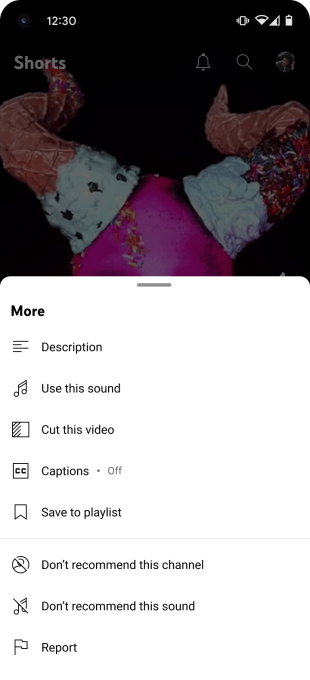
Image Credits: YouTube
To use the new remix feature, users will first tap on “Create,” then select “Cut” from the remix options. From there, they’ll be able to sample a one- to five-second video segment from any eligible video on demand or other YouTube Shorts video and incorporate that into their own.
When a Short is created from the user’s own channel’s existing content, it will be attributed back to the original video with a link in the Shorts player. This, explains YouTube, provides a way for creators to reach an untapped audience to engage with their long-form content. The attribution will work the same way if the sample is from someone else’s channel, too.
This expansion of Remix means billions of videos from across YouTube will now be available to Shorts creators, offering YouTube a potential competitive advantage over newer platforms like Instagram Reels, Snapchat Spotlight and to some extent, even TikTok — none of which have as extensive a history of user uploads as YouTube does.
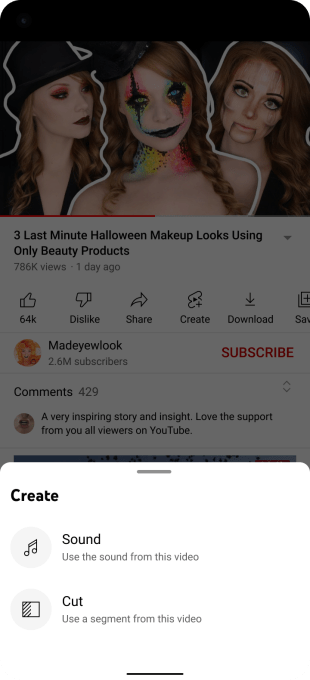
Image Credits: YouTube
More broadly, YouTube tells TechCrunch it believes this launch will help fuel the rise of the “hybrid creator” — meaning one who produces different types of videos, including short-form content, longer videos on demand and live videos. The benefit of this model is the creator’s ability to earn revenue from multiple streams, instead of being pigeon-holed into only one format. (YouTube’s rival TikTok seems to have also considered the need to woo creators used to producing longer videos. In February, TikTok expanded the max video length on its platform to 10 minutes, up from three minutes previously, in an obvious attempt to challenge YouTube.)
In addition to today’s news of the Remix addition, YouTube says it’s also making its Shorts player available to users on more devices, including desktop and tablet devices, as well as the mobile web.
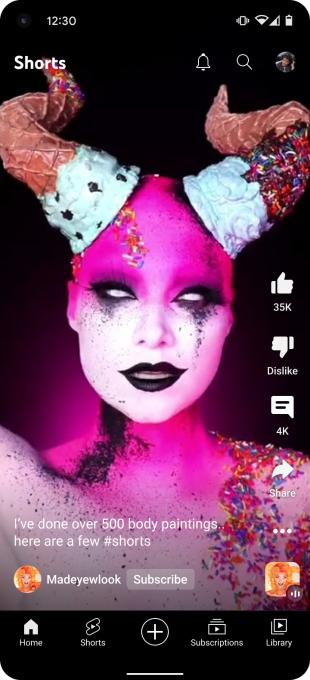
Image Credits: YouTube
Over the next few weeks, users across these platforms will find a Shorts shelf on the Home page and a Shorts tab, similar to what’s already been available in the main YouTube app. When they find a Shorts video they want to watch, they can then navigate into the Shorts experience and swipe vertically to see more videos, similar to TikTok’s feed. These views will count toward creators’ eligibility for the Shorts Fund, the company says.
Announced last summer, YouTube’s $100 million Shorts Fund is designed to reward creators for their most engaging and most viewed short-form videos through the end of 2022. Every month, YouTube offers thousands of eligible creators the ability to claim a payment from the fund. The payouts may range anywhere from $100 to $10,000, based on viewership and engagement, the company had previously explained.
Only the creator of the video seeing the engagement gets the fund payout. There’s no revenue share with the original creator of the source video that ended up remixed. This is how it works on other platforms, though. And YouTube notes that it may help the original video’s creator connect with a new audience.
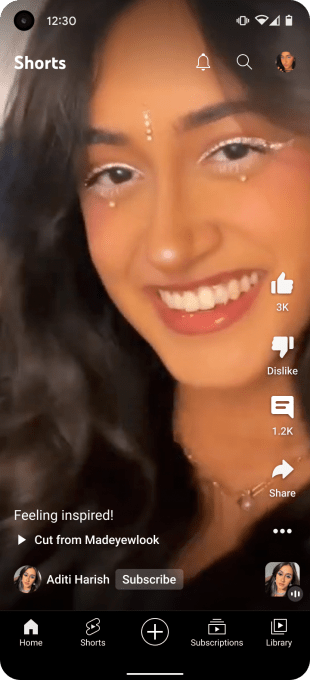
Image Credits: YouTube
Currently, Shorts Fund payments are the only way creators can make money from Shorts, but YouTube tells us it’s working on a long-term monetization model for the platform, which it plans to announce in the months ahead.
Creators will be able to track what videos of theirs have been remixed from YouTube Analtyics. Soon, YouTube will introduce notifications that will alert creators when their videos get remixed.
The expanded ability to remix from YouTube videos will begin rolling out today on iOS devices and will arrive on Android in the near future, says YouTube.
